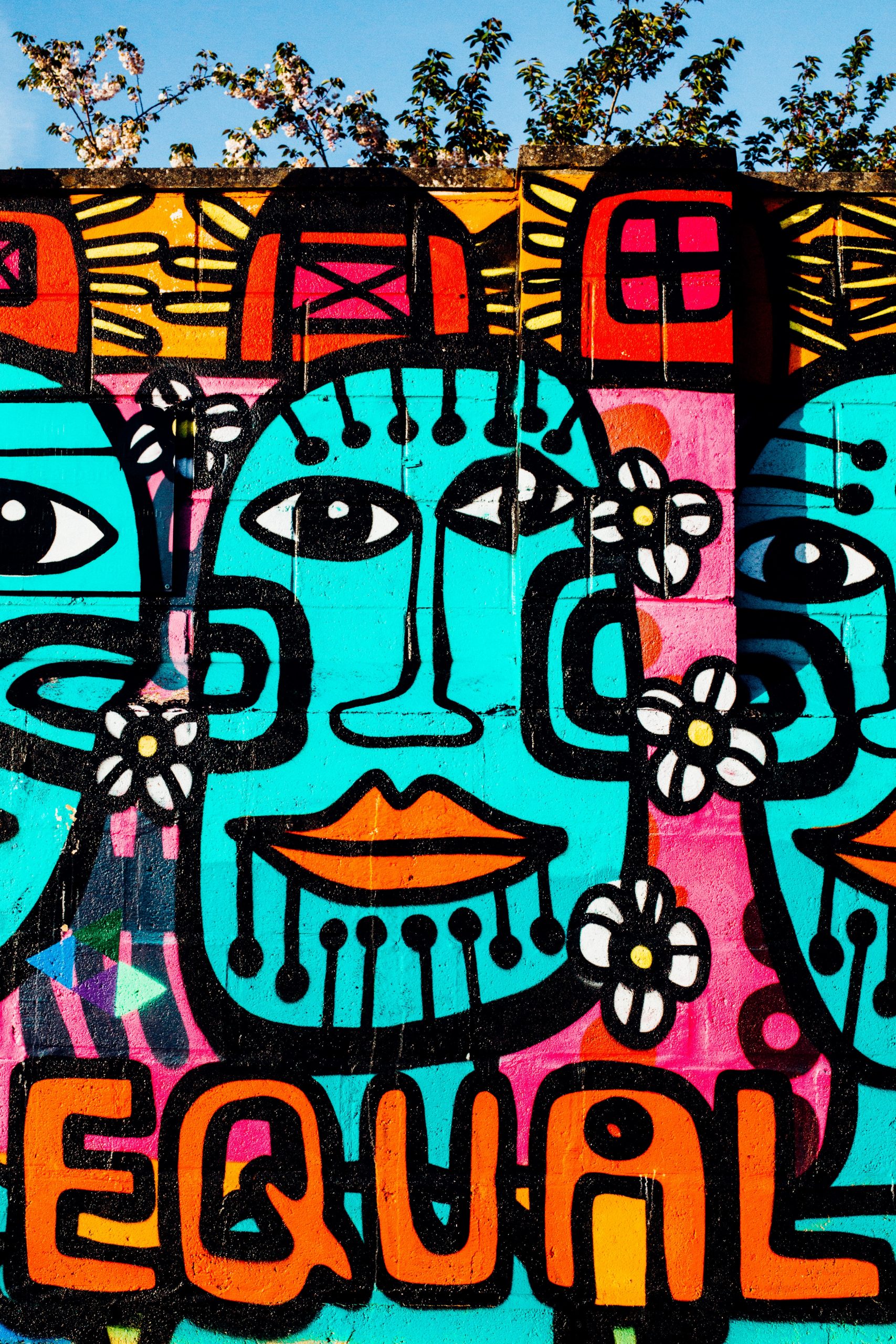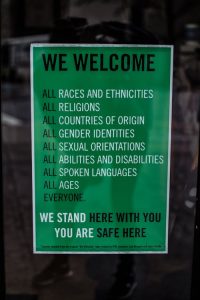10 Conclusion
Jill Lawrence

This text has explored the rich tapestry of learners and individuals in a range of different contexts. The authors’ experiences connecting with diversity underpinned the perspectives they presented as they interrogated the meanings of diversity, especially for those marginalised by difference, thus expanding our ways of seeing, knowing and understanding, and exploring new ways of embedding inclusion and hopefulness in these contexts. At its heart, this text galvanises us to celebrate the richness and strengths of diversity and to accept our responsibilities in motivating and supporting all educators, including ourselves, to appreciate and build on these strengths in developing inclusive environments and approaches.
The chapters explored a range of theoretical and contextual perspectives. Chapter 1: Introducing the key ideas by Lindy Abawi applied a critical orientation to reflect about the meanings of diversity and inclusion. Chapter 2, Different Childhoods: Transgressing boundaries through thinking differently by Charlotte Brownlow and Lindsay O’Dell, used the intersectional nature of individual identity and domains of difference to draw out the implications for positive identity constructions for individuals. In Chapter 3, Celebrating diversity: Focusing on inclusion, Lindy-Anne Abawi, Melissa Fanshawe, Cecily Andersen and Christina Rogers explored the Australian context to understand contemporary issues of difference and how education is not only fundamental in shaping the future but also critical in facilitating these processes. Chapter 4, Opening eyes onto inclusion and diversity in early childhood education, by Michelle Turner and Amanda Morgan, adopted a holistic approach to diversity and advocated that it be promoted as a strategy for educators working in contemporary early childhood settings. Chapter 5, Fostering first year nurses’ inclusive practice: a key building block for patient centred care by Jill Lawrence and Natasha Reedy advanced the concept of patient centred care, a theoretical perspective advocating a care approach that considers the whole person and guides nurses to cultivate an inclusive care practice in ‘becoming’ a Registered Nurse. In Chapter 6 Positioning ourselves in multicultural education: Opening our eyes to culture Renee Desmarchelier and Jon Austin exercise critical theory to unpack our own physical landscapes and the education system’s expectations of all students. They highlight areas where we may need to change our approaches in order to achieve more socially just outcomes for students from a diverse range of cultural backgrounds. Meanwhile Chapter 7 Creating an inclusive school for refugees and students with English as a Second Language or Dialect written by Susan Carter and Mark Creedon, applied inclusive practices to regular classrooms to support students with limited or no English speaking skills. Finally Chapter 8, Opening eyes onto diversity and inclusion for students with vision impairment by Melissa Cain and Melissa Fanshawe, used critical pedagogy to reimagine the educational, physical and social impacts of vision impairment and to design curriculum opportunities for students with vision impairment.
From the very beginning it is acknowledged that culture and cultural experiences impact our lives and also, insidiously colour our experiences of others with cultural biases, many of which we are not consciously aware. With the authors being critically conscious of their own ‘whiteness’ and middle-class backgrounds, they embraced the oral presentation of Kathryn Gilbey, an Alyawarr woman and colleague, to provide the basis of chapter 9, sharing cultural understandings from an Australian Indigenous perspective.
Woven together, these different perspectives disclosed six key themes to help us understand and reconceptualise the ways we see diversity and embed inclusive practice. The first theme to emerge related to intrinsic complexity and multifaceted nature of diversity. The ‘big’ picture of diversity materialised from the chapters, acknowledging that concepts of difference are constantly evolving. Lindy Abawi began by challenging readers to think through what it means to be inclusive of diverse individuals, both within educational contexts and beyond, and however we meet them – in our workplaces, in educational and health facilities, though social media, in online environments and through our friends and families. Chapter 1 expanded our views of diversity, introducing us to the importance of understanding the lived experiences of people with physical attributes different from our own, for example those related to race, birth characteristics, sexual characteristics, age, diagnosed (dis)ability, injury as well as differences related to sexual orientation, gender, mental health, autism, socioeconomic status, family structure and cultural affiliation. Underpinning all of these, Chapter 1 argued and expanded our understandings of personality differences, religious differences, learning preferences, health issues and psychological attributes. It is also important to recognise that each one of us embodies a complex mix of culture and abilities.
These understandings challenge us by introducing new ways of conceptualising diversity and how inclusive approaches and strategies might function in the contexts explored in the chapters that followed. Charlotte Brownlow and Lindsay O’Dell introduced new ways of seeing (dis)ability, gender and culture in order to explain how narratives of (non) inclusion frequently operate from early childhood through to lifelong world contexts. Lindy Abawi, Cecily Andersen and Christina Rogers then called on us to sharpen our thinking and practice by rebuffing our inclinations to place people into neat boxes and to instead develop a critical understanding of issues of difference. Melissa Cain and Melissa Fanshawe illuminated these challenges from the perspective of students with vision impairments, who need to navigate environments often not designed for students with vision impairments.

A second theme acquainted us with the concept of ‘super-diversity’, which results from an era of rapidly changing conceptions of diversity arising from the increasing change, dislocation and disruption occurring in contemporary spaces and places. The pace of change in political, social, cultural, scientific, technological and digital contexts is unrelenting, so much so that concepts of diversity are constantly changing form and shape, often as a result of emerging collisions between cultures; increased understandings generated by changing scientific and technological advancements; and the need to respond to shifts in power and politics. In Chapter 6, Renee Desmarchelier and Jon Austin explored the rapidly changing and very ethnically and culturally diverse student populations now entering communities and schools. This prompted them to ask: ‘What does it mean to be ‘multicultural’?; ‘Is multicultural education just something we provide to students from backgrounds that are not white-Anglo Australian?’; and ” How do we as teachers position ourselves in relation to multiculturalism, multicultural policies and education system requirements and expectations?’ In Chapter 7 Susan Carter and Mark Creedon argued that schools in Australia and internationally need to continually probe what inclusion really means in a rapidly changing global context, where the rate of migration is exponentially increasing as more people with limited or no English speaking skills seek asylum. The authors also made suggestions on ways of being inclusive to a child and the child’s family.
A third theme emerged from the need to make a shift from that of certainty to one of uncertainty. Many authors, for example, not only provided ways we might consciously or unconsciously ignore diversity but also ways to unpack, and then adapt, our own attitudes to culture and multicultural education. Lindy-Anne Abawi, Melissa Fanshawe, Kathryn Gilbey, Cecily Andersen and Christina Rogers roused us to understand that the act of listing the types of differences that contribute to the word ‘diversity’ is, at its core, an ‘exclusionary’ process and that invariably there will be differences that are not mentioned but which have personal importance and significance to specific individuals or groups. For example geographical location can affect any and all of the above, as can levels of adversity, historical or circumstantial, which may have impact on an individual, a family, a community, a country or a people. Jill Lawrence and Natasha Reedy applauded us to see that patient centred care intrinsically involves perceiving, communicating and caring for patients as individuals rather than as the end products of health systems where patients are treated with a ‘one size fits all’ mentality. Renee Desmarchelier and Jon Austin argued that engaging in critical self-reflection helps us understand ourselves and places us in a better position us to understand others. Melissa Cain and Melissa Fanshawe shared the challenges of limited access and inclusion for students with vision impairments with many critical elements of schooling, culture, behaviour management and curriculum displayed in visual format. A shift in thinking is needed before educators can think beyond the visual elements and incidental learning students with vision ‘naturally’ acquire through visual means.

A fourth, powerful theme emerging from the theoretical perspectives is the power of silencing. This theme reverberated from the recognition that many differences continue to remain unseen and unheard, resulting in individuals and groups who feel invisible and believe that those around them are blinded to their needs. In Chapter 9 Melissa Fanshawe, Lindy-Anne Abawi, and Jillian Guy reinforced how we need to acknowledge and purposely address the needs, beliefs and histories of Australia’s First Nation people. Probing questions challenged us to ‘see’ what we are missing; to ‘hear’ what we are currently not attuned to; and to ‘feel’ or empathise with those from an Australian Indigenous background who often feel unseen and disregarded. No matter the reason there are many individuals in society and in our education settings who are unable to voice their diverse ways of knowing and thinking, as they are often marginalised from mainstream views and approaches.
Before reading these chapters it may have seemed straightforward or natural to ‘write off’ differences, to ignore them and perhaps even to stereotype or actively discriminate against difference from a dominant, privileged or mainstream position. Recognising diversity in all its guises and forms requires shifts in our thinking .It also requires us to move from a position of certainty about our view of the world (that our way is the right, the natural or normal way) to one of uncertainty where we can no longer make assumptions or have expectations about difference. Chapter 2, for example explained, how negative assumptions held by others can exacerbate the interaction challenges for children who are ‘different’ in some way. Chapter 3 challenged our pre-conceived ways of thinking and engaging with others by reflecting on personal and possibly confronting experiences; by bringing an open mind to the concept of diversity; and by engaging with scenarios with respect, tact and integrity. A corollary of the theme of silencing was the authors’ recognition that, whilst acknowledging the power of words to both include and exclude, they were highly conscious of being explicit about readers’ willingness to ‘have-a-go’ regarding issues that many find difficult to talk about because they are fearful of offending an individual or group of people without intending to do so. Thus the authors took care to use terminology that would not offend others, but acknowledged that even as they wrote, they might have inadvertently used words that could be considered offensive by some even though these same words are accepted by others as respectful. Inclusion can therefore be a tricky mindset!
Another predominant theme arising from the chapters was the concept of inclusion and what it looks like, sounds like and feels like. Chapter 4 for example, viewed inclusion as a celebratory characteristic of early childhood education encompassing individual differences such as culture, language, location, economics, learning, abilities and gender. The chapter referred to the United Nations Convention on the Rights of the Child and its principle that all children have the right to feel accepted and respected through the provision of fair, just and non-discriminatory education and care for children. Chapter 1 defined inclusion as a mindset of acceptance and planning for all. In essence the chapter affirmed that inclusion encompasses the Universal Design for Learning approach where planning takes into account multiple means of representation, multiple means of engagement and multiple means of action and expression. Chapter 1 confirmed that as both educators and as members of diverse communities, we need to be thinking about, negotiating and transforming the relationships we forge as teachers with our students. Inclusion also means having a thorough understanding of individual strengths, challenges and needs that are directly connected to knowledge production, institutional structures, and to the social and relationships within the wider community, society and nation-state. Chapter 1 outlined a set of six principles that underpin the creation of an inclusive culture (Abawi, Carter, Andrews & Conway, 2018) with each being embodied throughout the text.
- Principle 1 Informed shared social justice leadership at multiple levels – learning from and with others.
- Principle 2 Moral commitment to a vision of inclusion – explicit expectations regarding inclusion embedded in institution wide practice.
- Principle 3 Collective commitment to whatever it takes – ensuring that the vision of inclusion is not compromised.
- Principle 4 Getting it right from the start – wrapping students, families and staff with the support needed to succeed.
- Principle 5 Professional targeted student-centred learning – professional learning for teachers and support staff informed by data identified need.
- Principle 6 Open information and respectful communication – leaders, staff, students, community effectively working together.
The final theme built on the theme of inclusion by introducing specific inclusive strategies can be used to become more inclusive in our personal and professional lives. Chapter 2 advised that ability and socially approved identities must be carefully outlined and managed within systems, with clear benchmarks established about what is ‘appropriate’ and deemed ‘inappropriate’ when identifying and responding to difference. This chapter urged readers and educators view differences through careful reflection on environments and the need to personally act in ways that maximise ability. Chapter 4 shared a physical cultural audit which involved a process of collecting data in the form of observations and/or photographs of the physical spaces and analysing them for the messages that they give about the culture[s] present in an environment. Chapter 4 contended that by turning the gaze on ourselves and our own cultures, we forefront self-awareness and become conscious that we view the world from a particular cultural position. Thus we can better understand the ways in which we culturally construct our understanding of the world around us. These processes assist us to unpack our own and the education system’s expectations of all students and recognize where we may need to change our approach in order to achieve more socially just outcomes for students from a diverse range of cultural backgrounds. Chapter 5 advanced the concept of patient centred care to confront notions of power, voice and agency which has potential to shape ‘outcomes’ for those on the ‘margins’; to imagine the implications for society of positive identity constructions for individuals; and to highlight a way of working that facilitates the creation of shared cultures and a place where all can feel safe and included. There are implications from this chapter that resonate within educational contexts. Chapter 7 outlined the inclusive practices of one highly diverse junior school to share the ways that they support, engage, enculturate and educate students. The case study methodology used revealed a way of working that facilitates the creation of a shared inclusive culture, a place where individuals share that they feel safe and included. The chapter cautioned however that the cost of caring was a pragmatic consideration that educators face, and that strategies need to be consciously actioned in order to engage community help and create a sense of hopefulness.
At its heart, this text requested you to consider your own learning, work or social context and the extent to which the principles explored in each of the chapters are applicable and evident. The text also asked you to reflect on what more could be done to embrace diversity and embed inclusion. A key question was posed: how could an uncompromising social justice agenda anchored to the needs of a changing student cohort within a specific school context be maintained? The text then requested readers’ assistance to develop a picture of what the answer might be. As an epilogue of learning, your responses will be collated and published in the next addition of this text. Your responses can be uploaded at the website: This outcome personifies and exemplifies a co-construction of knowledge in an on-going and reiterative process of collective learning.
This text was based on the assumption that by talking about diversity and inclusion avenues for sharing and knowledge acquisition are opened up. This in turn then values diversity as a strength and validates the need to embody inclusive practices in our educational institutions and communities. If what we have shared here has challenged your understandings, generated discussion or provoked debate, including the rightness or wrongness of what we have written, then this book has achieved its purpose.

We seek your assistance to co-construct knowledge of ways of being inclusive and catering for diversity . We intend to collate your responses and publish them in the next addition of this text as an epilogue of learning, a co-construction of knowledge in an on-going and as a reiterative process of collective learning. Please post your responses to www.usq.edu.au/open-practice . We will then utilise reader responses as a basis for further study and publication.
references
Abawi, L. Carter, S. Andrews, D. & Conway, J. (2018). Inclusive schoolwide pedagogical principles: Cultural indicators in action. In O. Bernad-Cavero (Ed.), New pedagogical challenges in the 21st Century – Contributions of research in education (pp. 33-55). doi: 10.5772/intehopen.70358

